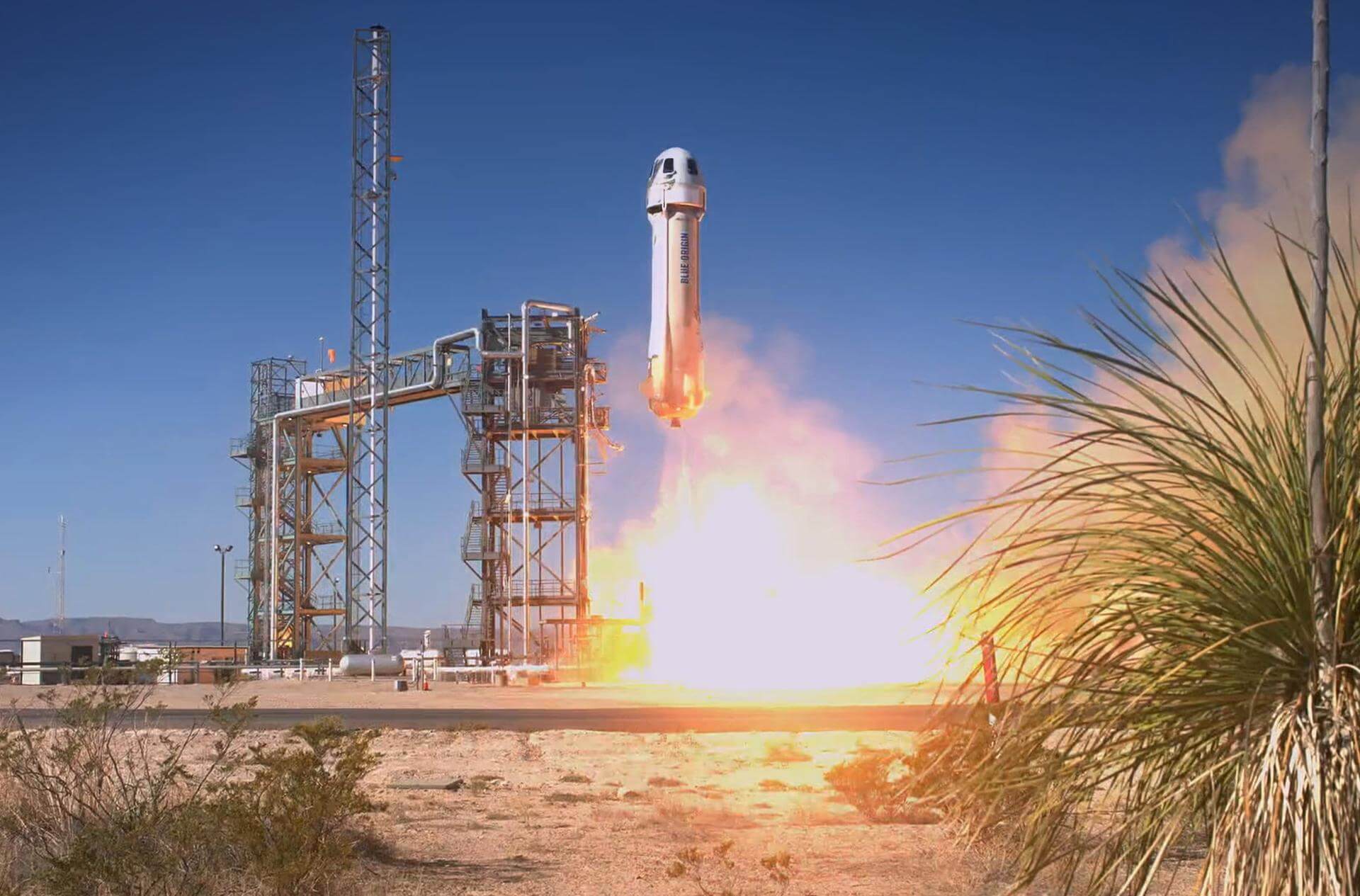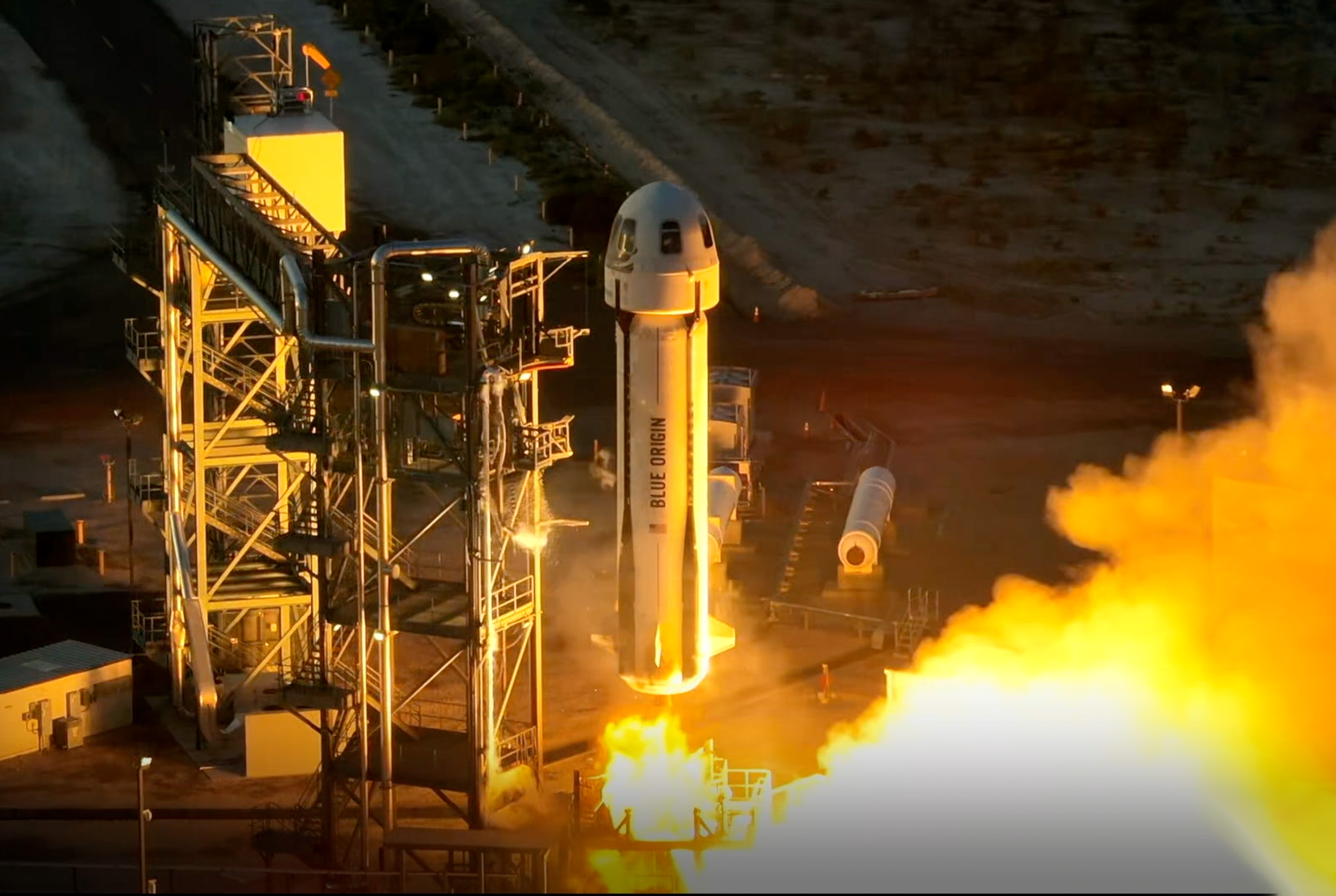
New Shepard - NS-5
Details
Status - Active
5th New Shepard booster.
New Shepard | NS-37
Blue Origin | United States of AmericaCorn Ranch, Van Horn, TX, USA
Dec. 20, 2025, 2:15 p.m.
New Shepard | NS-35
Blue Origin | United States of AmericaCorn Ranch, Van Horn, TX, USA
Sept. 18, 2025, 1 p.m.
Status: Launch Successful
Mission:
NS-35 is the 35th flight for the New Shepard program. This flight will fly more than 40 scientific and research payloads to space and back, including 24 experiments from NASA’s TechRise Student Challenge and payloads for Johns Hopkins Applied Physics Laboratory, Oklahoma State University, University of Florida, Carthage College, University of Central Florida, Teledyne, Space Lab Technologies, and Teachers in Space, among others.
Suborbital NS-5 - Flight Proven ( ) Corn Ranch Landing Pad, West TexasNew Shepard | NS-33
Blue Origin | United States of AmericaCorn Ranch, Van Horn, TX, USA
June 29, 2025, 2:39 p.m.
New Shepard | NS-31
Blue Origin | United States of AmericaCorn Ranch, Van Horn, TX, USA
April 14, 2025, 1:30 p.m.
New Shepard | NS-29
Blue Origin | United States of AmericaCorn Ranch, Van Horn, TX, USA
Feb. 4, 2025, 4 p.m.
Status: Launch Successful
Mission:
NS-29 will simulate the Moon’s gravity and fly 30 payloads, all but one of which is focused on testing lunar-related technologies. The payloads will experience at least two minutes of lunar gravity forces, a first for New Shepard and made possible in part through support from NASA. The flight will test six broad lunar technology areas: In-situ resource utilization, dust mitigation, advanced habitation systems, sensors and instrumentation, small spacecraft technologies, and entry descent and landing. Proving out these technologies at lower cost is another step toward Blue Origin’s mission to lower the cost of access to space for the benefit of Earth. It also enables NASA and other lunar surface technology providers to test innovations critical to achieving Artemis program goals and exploring the Moon’s surface. The New Shepard crew capsule is using its Reaction Control System (RCS) to spin up to approximately 11 revolutions per minute. This spin rate simulates one-sixth Earth gravity at the midpoint of the crew capsule lockers. In simulated lunar gravity, customers can accelerate their learning and technology readiness for lunar payloads at much lower cost.
Suborbital NS-5 - Flight Proven ( ) Corn Ranch Landing Pad, West TexasNew Shepard | NS-27
Blue Origin | United States of AmericaCorn Ranch, Van Horn, TX, USA
Oct. 23, 2024, 3:27 p.m.
Soyuz 2.1a
Obzor-R No.1
43/4 (43R) - Plesetsk Cosmodrome, Russian FederationNote: Assignment of payloads to this launch is uncertain. The Russian Obzor-R satellite is a planned X-band radar earth observation satellite desi…
LVM-3 (GSLV Mk III)
BlueBird Block 2 #1
Satish Dhawan Space Centre Second Launch Pad - Satish Dhawan Space Centre, IndiaAST SpaceMobile’s Block 2 BlueBird satellites are designed to deliver up to 10 times the bandwidth capacity of the BlueBird Block 1 satellites, requi…
Long March 12A
Demo Flight
Long March 12A Pad - Jiuquan Satellite Launch Center, People's Republic of ChinaFirst test launch of CASC/SAST’s Long March 12A rocket, with a dummy payload. The rocket’s 1st stage attempted to land on a landing pad about 300 km …
HANBIT-Nano
Spaceward
HANBIT Pad - Alcântara Space Center, Federative Republic of BrazilMaiden orbital launch attempt for the South Korean start-up Innospace and its HANBIT-Nano small launch vehicle. Onboard this flight are five small sa…
H3-22
Michibiki 5 (QZS-5)
Yoshinobu Launch Complex LP-2 - Tanegashima Space Center, JapanQZSS (Quasi Zenith Satellite System) is a Japanese satellite navigation system operating from inclined, elliptical geosynchronous orbits to achieve o…



